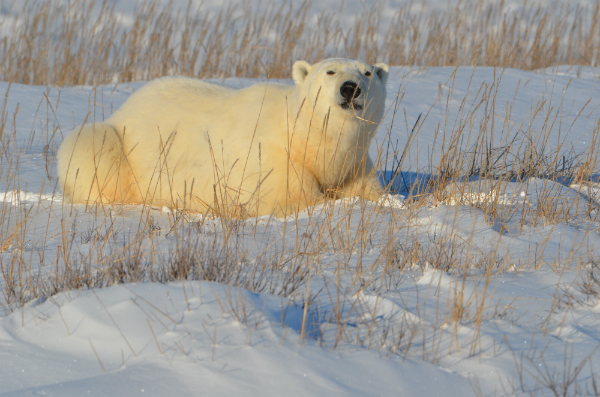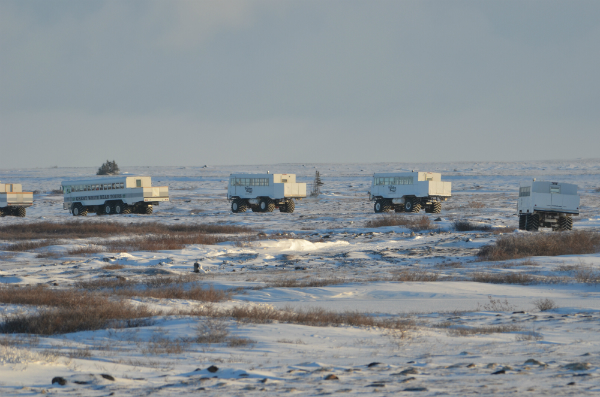Polar Bears: It’s all about conserving energy
Written by Sharolyn Mathieu Vettese, President, Wind Simplicity
In 2010, while on a flight from London-Heathrow to Toronto, I heard there was a group of Brits on-board going to see the polar bears in Churchill, Manitoba. I couldn’t believe it. They weren’t going to Banff, Alberta; but Churchill, the one located on Hudson Bay, in November — a time when most Canadians are planning a trip to warm climes. So, when I had a chance to travel to Churchill with WWF, I knew it was an opportunity for me to see what most Canadians don’t.
It turns out, remote Churchill has a world class tourism industry, a winter safari, for the (mostly) overseas tourists who come to feel the invigorating cold, and hopefully see the polar bears in their natural habitat. Other wildlife sightings are a bonus.
Fortunately, nature provided us with polar bears on our first day out on the tundra. We saw none the second day, but that was okay. From the outset, our guide, Derek, reminded us of the real danger all around us, including in town, of hungry polar bears that had not eaten properly since spring, when the ice melted and they lost access to their primary food source, seals. For me, this highlighted the strong link between polar bears and sea ice, and how climate change is affecting that relationship.
In fact, the temperature is rising twice as fast in Canada’s own backyard – the Arctic – compared to other parts of the world, so we Canadians should be doubly concerned about climate change. The change is visible already, and it is happening fast.
Aboard the tundra buggy, a customized vehicle designed and made locally to minimize damage to the terrain, we were able to see the polar bears from a close but respectful distance without disturbing them. Seeing the largest Arctic predator in its natural habitat is a quiet experience, well worth the cold. It is so quiet that there is no need for the polar bear to growl: It hisses and chomps its teeth.
I was impressed with the beauty of this great animal. Made to cover great distance quickly with its powerful long limbs, the ivory-coloured polar bear with the black nose is sleek, graceful and agile, but moves slowly. As Pete Ewins, Senior Species Officer for WWF-Canada’s Arctic Program, said on several occasions, “For polar bears, it’s all about conserving energy.” Being in the renewable energy business, this struck a chord for me. How wrong can humans be to be wasting so much energy in our daily lives? If creatures from tiny spiders to the giant polar bears conserve their energy, why should humans be the exception?
Changes to the land and water due to climate change are already evident. In Churchill, the loss of permafrost on the tundra has already resulted in the land rising and the shoreline extending into Hudson Bay. The loss of sea ice extends the range of species such as the killer whale that complete with the polar bear for food. It is obvious that our knowledge of this great region is little and it deserves to be understood and respected, not just exploited.
So, if you think of the planet as your home, wouldn’t you want to be a better neighbour and follow the polar bear’s example by conserving energy? Everybody is part of the problem; and everybody is part of the solution. There is no better time than now to help the polar bear, and indirectly, yourself.



